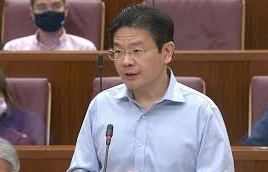From financial instability to safety nets, Candice Phang shares the journey of balancing passion and business savvy in her freelance career.
A warm light bathes Candice Phang’s workspace in soft hues. Light rain taps against the window, but she’s too absorbed in the spread of papers on her desk to notice. Diligently, her paintbrush glides over her notebook, taking rounded, deliberate strokes.
After a while—just as if on cue—one of her feline muses, Fishball, hops onto the desk, blocking her palette and notebook. Candice laughs, scolding the cat playfully, but Fishball is unbothered, standing firm. Candice takes it as a sign to pause. There are no strict lunch breaks or clock-out times—at least, not when you work for yourself.
A One-Woman Show Many dream of being their own boss, imagining the freedom to set their own hours and manage their workload without the constraints of office life. The allure of working for oneself, especially in a field you’re passionate about, is powerful.
For 39-year-old Candice, the desire to follow her passion led her to leave her steady job as a graphic designer and launch her own independent studio eight years ago. Today, she’s the owner of Puffingmuffin Studio, an illustrative studio where Candice is not just the creative force, but also the sole employee handling everything from accounts to publicity.
Freelancing, though fulfilling, comes with its challenges. Candice admits that while she’s outwardly successful, she struggles with the less glamorous side of business, like managing finances. “I have to step out of my comfort zone for things I’m not naturally inclined to,” she says, laughing. “Finance is especially painful; I’m not really trained for it.”
Embracing Instability In choosing a freelance career, Candice gave up the security of a regular paycheck. “The biggest worry was financial instability. I had no idea when jobs would come in,” she recalls. “It was hard to plan, especially without the benefits that come with a full-time job.”
For freelancers, the instability isn’t just financial; it’s also personal. Health care, transportation, and basic benefits are all on the line. Candice shares that her biggest stress often revolves around the feast-or-famine cycle of freelancing—either she’s struggling with an empty calendar or juggling too many projects with not enough time.
“Having a steady stream of clients is always a concern,” she admits. “It’s something I never take for granted.”
When the pandemic hit, Candice found herself at a crossroads. With live events halted, she couldn’t rely on the same external projects as before. But rather than sinking, she adapted, focusing on private commissions and increasing her social media presence to keep the momentum going. She never turns down projects, unsure when the next one will come. “I just have to keep going,” she shrugs.
Setting Up Safety Nets as a Freelancer Despite the uncertainty, Candice didn’t jump into freelancing on a whim. She started Puffingmuffin Studio as a side hustle in 2013 while still working as a graphic designer. Candice joined a mentorship program that helped her reach a wider audience and exhibit her work in a group show. As her side hustle gained traction, she faced a choice: stay in a stable job or pursue her passion full-time.
Her decision was strategic. At the time, she had fewer financial obligations and the flexibility to experiment. Candice gave herself a two-year window to make it work—if she couldn’t succeed as a freelancer by then, she’d return to a regular job.
“I made sure to save enough money to cover at least six months with no income,” she says. “I had to cut back on non-essential expenses, but I was ready to try.”
Her calculated move paid off. As she gained more freelance opportunities, Candice leaned into her passion, confident that her work was in demand.
The Scenic Route Similar to Candice, Clarissa and Wei Fang, the founders of Tow Tow, a leather goods label, took a gradual approach to building their business. They started small, manufacturing bags only when a customer ordered them, reinvesting earnings into further production. They also maintained their full-time jobs while their business grew.
“We were mindful of costs from the start,” Clarissa says. “You have to keep your inventory lean and invest wisely.”
While they hope to run Tow Tow full-time in the future, they acknowledge that they need the financial stability of their day jobs for now. “Starting a business isn’t cheap,” Wei Fang adds. “We need money to sustain our business while we grow it.”
Passion with a Touch of Pragmatism Like Clarissa and Wei Fang, Candice doesn’t regret her leap into freelancing. Still, she recognizes that pursuing passion requires more than just enthusiasm—it’s about having practical plans in place.
“Living in Singapore, with its financial responsibilities, you need to have safety nets,” she says. “Having enough savings is crucial before you make that career switch, especially in something as unpredictable as freelancing.”
For anyone standing at the crossroads Candice once faced, she offers this advice: “Never be afraid to ask questions. You’ll never know unless you try.”








